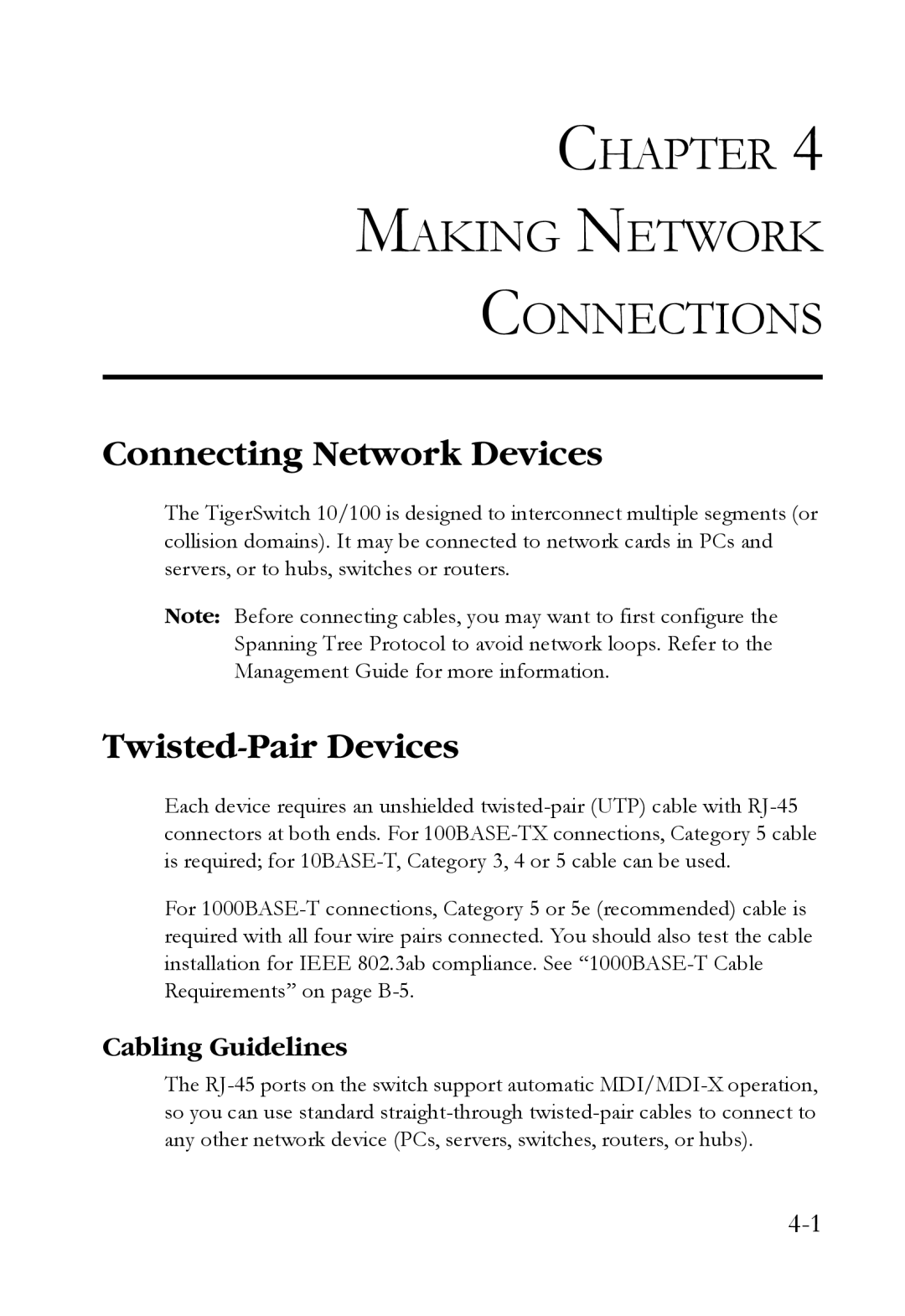
CHAPTER 4
MAKING NETWORK
CONNECTIONS
Connecting Network Devices
The TigerSwitch 10/100 is designed to interconnect multiple segments (or collision domains). It may be connected to network cards in PCs and servers, or to hubs, switches or routers.
Note: Before connecting cables, you may want to first configure the Spanning Tree Protocol to avoid network loops. Refer to the Management Guide for more information.
Twisted-Pair Devices
Each device requires an unshielded twisted-pair (UTP) cable with RJ-45 connectors at both ends. For 100BASE-TX connections, Category 5 cable is required; for 10BASE-T, Category 3, 4 or 5 cable can be used.
For 1000BASE-T connections, Category 5 or 5e (recommended) cable is required with all four wire pairs connected. You should also test the cable installation for IEEE 802.3ab compliance. See “1000BASE-T Cable Requirements” on page B-5.
Cabling Guidelines
The RJ-45 ports on the switch support automatic MDI/MDI-X operation, so you can use standard straight-through twisted-pair cables to connect to any other network device (PCs, servers, switches, routers, or hubs).
